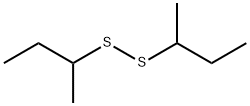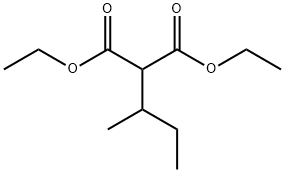2-Pentanol
Synonym(s):2-Pentanol;(±)-2-Pentanol;sec-amyl alcohol;sec-Pentyl alcohol;Methyl propyl carbinol
- CAS NO.:6032-29-7
- Empirical Formula: C5H12O
- Molecular Weight: 88.15
- MDL number: MFCD00004579
- EINECS: 227-907-6
- SAFETY DATA SHEET (SDS)
- Update Date: 2024-12-18 14:07:02

What is 2-Pentanol?
Chemical properties
clear colourless liquid
Chemical properties
Amyl alcohols (pentanols) have eight isomers. All are flammable, colorless liquids, except the isomer 2,2- dimethyl-1-propanol, which is a crystalline solid.
Chemical properties
2-Pentanol has a mild green, fusel-oil odor. This compound is also reported as having a winy, ethereal odor.
Occurrence
Reported found in banana, Satsuma mandarin peel oil, peach, raw asparagus, vinegar, wheaten bread, cheddar cheese, Swiss cheese, other cheeses, roasted barley, roasted filbert, roasted peanut, plum brandy, Bourbon vanilla, Chinese quince, apple, orange juice, bilberry, cranberry, guava, grapes, melon, papaya, pineapple, strawberry, ginger, butter, chicken fat, hop oil, beer, cognac, Scotch whiskey, rum, cider, red wine, cocoa, tea, oats, honey, soybean, coconut meat, passion fruit, beans, mushroom, starfruit, mango, malt, mountain papaya, endive, shrimp, naranjilla fruit and cape gooseberry.
The Uses of 2-Pentanol
2-Pentanol is a secondary alcohol that can be used as:
- A hydrogen donor in the synthesis of methyl furan via catalytic transfer hydrogenation of furfural over a ruthenium/ruthenium oxide/carbon catalyst.
- A reagent in one-pot synthesis of brominated derivatives of 1,3-dioxolane.
- A solvent for the synthesis of organic molecules such as 2, 4-diaminopyrimidines and 4-aza-podophyllotoxins.
The Uses of 2-Pentanol
(±)-2-Pentanol is a widely used solvent and a building block used in the synthesis of consumer products.
Definition
ChEBI: A secondary alcohol that is pentane substituted at position 2 by a hydroxy group.
Preparation
By catalytic reduction of methyl n-propyl ketone.
General Description
2-Pentanol, a secondary alcohol, is a volatile organic compound (VOC) that is a common aroma-active component of food and beverage products.
Safety Profile
Moderately toxic by ingestion and intraperitoneal routes. A narcotic. A skin and severe eye irritant. Flammable liquid when exposed to heat or flame; can react with oxidzing materials. A severe explosion hazard when exposed to heat or flame. To fight fire, use alcohol foam, dry chemical. When heated to decomposition it emits acrid smoke and irritating fumes. See also ALCOHOLS
Potential Exposure
(n-isomer); Suspected reprotoxic hazard, Primary irritant (w/o allergic reaction), (iso-, primary): Possible risk of forming tumors, Primary irritant (w/o allergic reaction), (sec-, active primary-, and other isomers) Primary irritant (w/o allergic reaction). Used as a solvent in organic synthesis and synthetic flavoring, pharmaceuticals, corrosion inhibitors; making plastics and other chemicals; as a flotation agent. The (n-isomer) is used in preparation of oil additives, plasticizers, synthetic lubricants, and as a solvent.
Shipping
UN2811 Pentanols, Hazard Class: 3; Labels: 3- Flammable liquid. UN1987 Alcohols, n.o.s., Hazard Class: 3; Labels: 3-Flammable liquid.
Purification Methods
Refluxed it with CaO, distil it, then reflux it with magnesium and again fractionally distil it. [Beilstein 1 IV 1655.]
Incompatibilities
Forms an explosive mixture with air. Contact with strong oxidizers and hydrogen trisulfide may cause fire and explosions. Incompatible with strong acids. Violent reaction with alkaline earth metals forming hydrogen, a flammable gas.
Waste Disposal
Dissolve or mix the material with a combustible solvent and burn in a chemical incinerator equipped with an afterburner and scrubber. All federal, state, and local environmental regulations must be observed.
Properties of 2-Pentanol
| Melting point: | -50 °C |
| Boiling point: | 118-119 °C (lit.) |
| Density | 0.812 g/mL at 25 °C (lit.) |
| vapor density | 3 (vs air) |
| vapor pressure | 3 hPa (20 °C) |
| FEMA | 3316 | 2-PENTANOL |
| refractive index | n |
| Flash point: | 93 °F |
| storage temp. | Store below +30°C. |
| solubility | 166g/l |
| form | Liquid |
| pka | 15.31±0.20(Predicted) |
| color | Clear colorless |
| Relative polarity | 0.488 |
| Odor | at 100.00 %. mild green fusel oil fermented |
| Odor Threshold | 0.29ppm |
| explosive limit | 1.2-10.5%(V) |
| Water Solubility | 16.6 g/ 100 mL (20 ºC) |
| Merck | 14,7119 |
| JECFA Number | 280 |
| BRN | 1718819 |
| Dielectric constant | 13.8(22℃) |
| CAS DataBase Reference | 6032-29-7(CAS DataBase Reference) |
| NIST Chemistry Reference | 2-Pentanol(6032-29-7) |
| EPA Substance Registry System | 2-Pentanol (6032-29-7) |
Safety information for 2-Pentanol
| Signal word | Warning |
| Pictogram(s) |
 Flame Flammables GHS02  Exclamation Mark Irritant GHS07 |
| GHS Hazard Statements |
H226:Flammable liquids H315:Skin corrosion/irritation H319:Serious eye damage/eye irritation H332:Acute toxicity,inhalation H335:Specific target organ toxicity, single exposure;Respiratory tract irritation |
| Precautionary Statement Codes |
P210:Keep away from heat/sparks/open flames/hot surfaces. — No smoking. P233:Keep container tightly closed. P240:Ground/bond container and receiving equipment. P303+P361+P353:IF ON SKIN (or hair): Remove/Take off Immediately all contaminated clothing. Rinse SKIN with water/shower. P305+P351+P338:IF IN EYES: Rinse cautiously with water for several minutes. Remove contact lenses, if present and easy to do. Continuerinsing. |
Computed Descriptors for 2-Pentanol
| InChIKey | JYVLIDXNZAXMDK-UHFFFAOYSA-N |
New Products
(S)-3-Aminobutanenitrile hydrochloride 4-Methylphenylacetic acid N-Boc-D-alaninol N-BOC-D/L-ALANINOL Tert-butyl bis(2-chloroethyl)carbamate 3-Morpholino-1-(4-nitrophenyl)-5,6-dihydropyridin- 2(1H)-one Furan-2,5-Dicarboxylic Acid Tropic acid 1-Bromo-3,5-Di-Tert-Butylbenzene S-2-CHLORO PROPIONIC ACID ETHYL ISOCYANOACETATE 2-Bromo-1,3-Bis(Dimethylamino)Trimethinium Hexafluorophosphate 4-IODO BENZOIC ACID 3-NITRO-2-METHYL ANILINE 1-(2,4-DICHLOROPHENYL) ETHANAMINE (2-Hydroxyphenyl)acetonitrile 4-Bromopyrazole 2-(Cyanocyclohexyl)acetic acid 4-methoxy-3,5-dinitropyridine 1-(4-(aminomethyl)benzyl)urea hydrochloride 2-aminopropyl benzoate hydrochloride diethyl 2-(2-((tertbutoxycarbonyl)amino) ethyl)malonate tert-butyl 4- (ureidomethyl)benzylcarbamate Ethyl-2-chloro((4-methoxyphenyl)hydrazono)acetateRelated products of tetrahydrofuran








You may like
-
 2-Pentanol CAS 6032-29-7View Details
2-Pentanol CAS 6032-29-7View Details
6032-29-7 -
 2-Pentanol CAS 6032-29-7View Details
2-Pentanol CAS 6032-29-7View Details
6032-29-7 -
 2-Pentanol CAS 6032-29-7View Details
2-Pentanol CAS 6032-29-7View Details
6032-29-7 -
 2-Pentanol CAS 6032-29-7View Details
2-Pentanol CAS 6032-29-7View Details
6032-29-7 -
 1975-50-4 98%View Details
1975-50-4 98%View Details
1975-50-4 -
 2-HYDROXY BENZYL ALCOHOL 98%View Details
2-HYDROXY BENZYL ALCOHOL 98%View Details
90-01-7 -
 14714-50-2 (2-Hydroxyphenyl)acetonitrile 98+View Details
14714-50-2 (2-Hydroxyphenyl)acetonitrile 98+View Details
14714-50-2 -
 118753-70-1 98+View Details
118753-70-1 98+View Details
118753-70-1